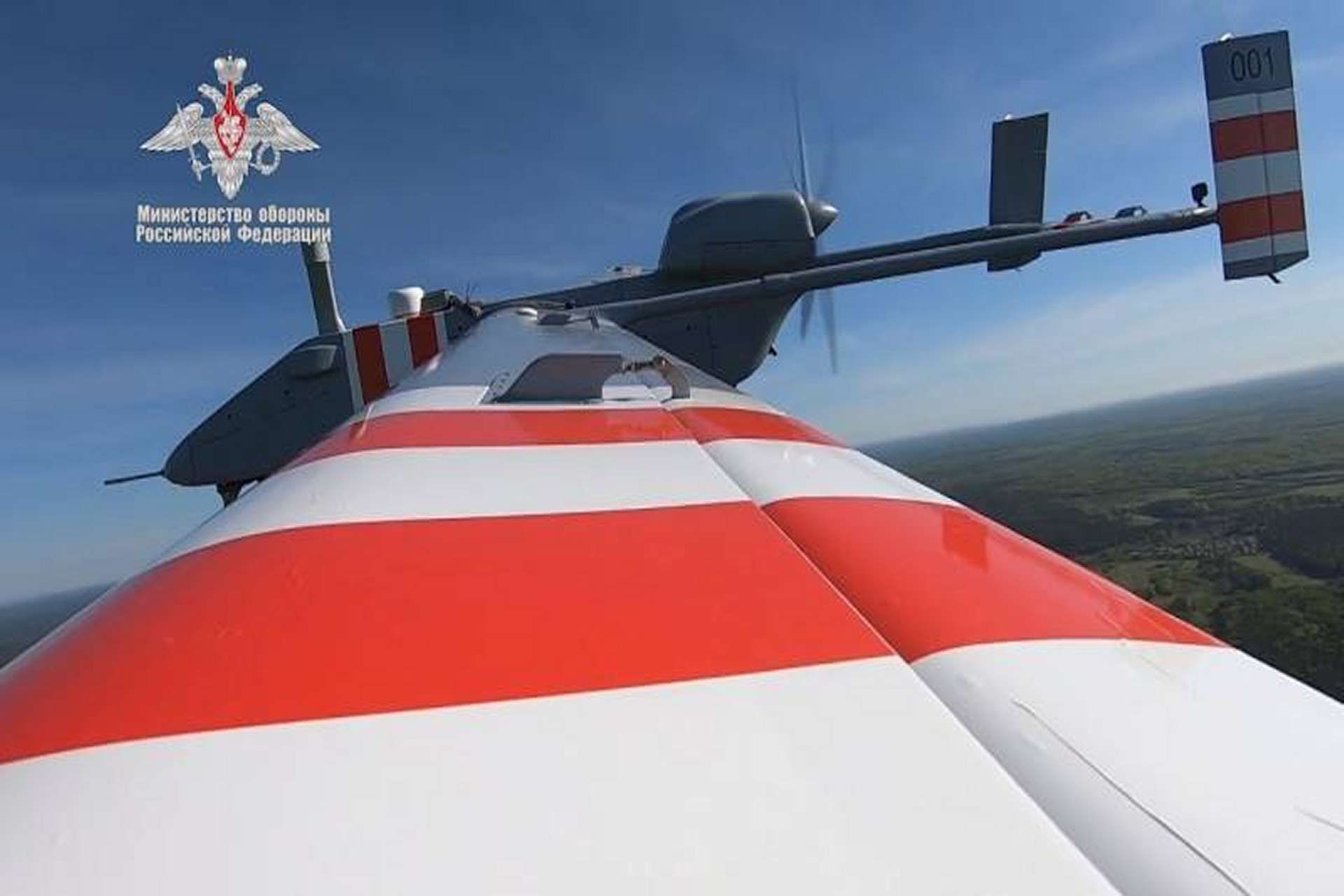Breaking News
Ukraine Shoots Down Russian Forpost-R Combat Drone Based on Israeli IAI Searcher MK2 ISTAR UAV.
On July 27, 2024, the Ukrainian Air Force announced the downing of several drones, including a notable Russian model, the Forpost-R. This drone is a modification of the Israeli IAI Searcher, known for its reconnaissance and surveillance capabilities.
Follow Army Recognition on Google News at this link

Russian Forpost-R Combat Drone (Picture source: Russian MoD)
The "Forpost" represents a turning point in the technological collaboration between Russia and Israel. Originally, this drone was manufactured under license in Russia from the Israeli model Searcher Mk II, designed for reconnaissance and target marking. However, deteriorating relations between the West and Russia led Israel to yield to American pressures in 2016, ending the delivery of essential components. This decision prompted Russia to initiate a program to indigenize the Forpost, prioritizing the development of an attack variant, which emerged as the Forpost-R with significantly enhanced capabilities.
For context, the Israeli version is manufactured by Israel Aerospace Industries. Its first flight was in 1992, the IAI Searcher. The Searcher aimed to replace aging drones like the Tadiran Mastiff and IAI Scout. Although it visually resembles the Scout, the Searcher is much larger, and its performance is far superior. It is a fixed-wing, high-wing drone with a twin-boom tail. It is powered by a 47-horsepower Limbach L550 piston engine that drives a three-blade propeller at the tail. Takeoffs and landings are runway-based due to its fixed landing gear. Optical sensors are installed under the fuselage.
In 2008, after the Russo-Georgian War, Russia realized the limitations of its drone fleet, which were outdated and underperforming. This awareness prompted Russia to seek more advanced drones. It turned to Israel for drone purchases, following the effective performance of Israeli drones used by Georgia during the conflict. Israel, while refusing to sell armed drones, agreed to provide reconnaissance drones, the IAI Searchers MKII, to Russia.
Technically, the original Israeli drone and its Russian version differ mainly in their armament and operational capabilities. The Israeli Searcher is equipped for ISTAR (Intelligence, Surveillance, Target Acquisition, and Reconnaissance) missions, with a suite of optical sensors under the fuselage and powered by a piston engine, giving it significant flight autonomy without direct offensive capability. In contrast, the Russian Forpost-R is transformed into a strike platform, capable of carrying guided missiles such as the Kornet-D system and guided bombs like the KAB-20, thus expanding its role beyond mere reconnaissance. Indeed, the Russians modified the drone to install at least two external hardpoints to carry guided or unguided bombs. The fully Russian version, the Forpost-R, completed its first flight in late August 2019.
The development and adoption of the Forpost-R demonstrate the effectiveness of Russia's indigenization program, which has successfully replicated and improved a foreign UAV, making it suitable for combat missions. This drone has a maximum endurance of 18 hours, can reach a service altitude of about 20,000 feet, and has a maximum range of about 400 kilometers. These features make the Forpost-R a valuable tool for the Russian military, capable of responding to various operational scenarios thanks to its versatility in armament.


























